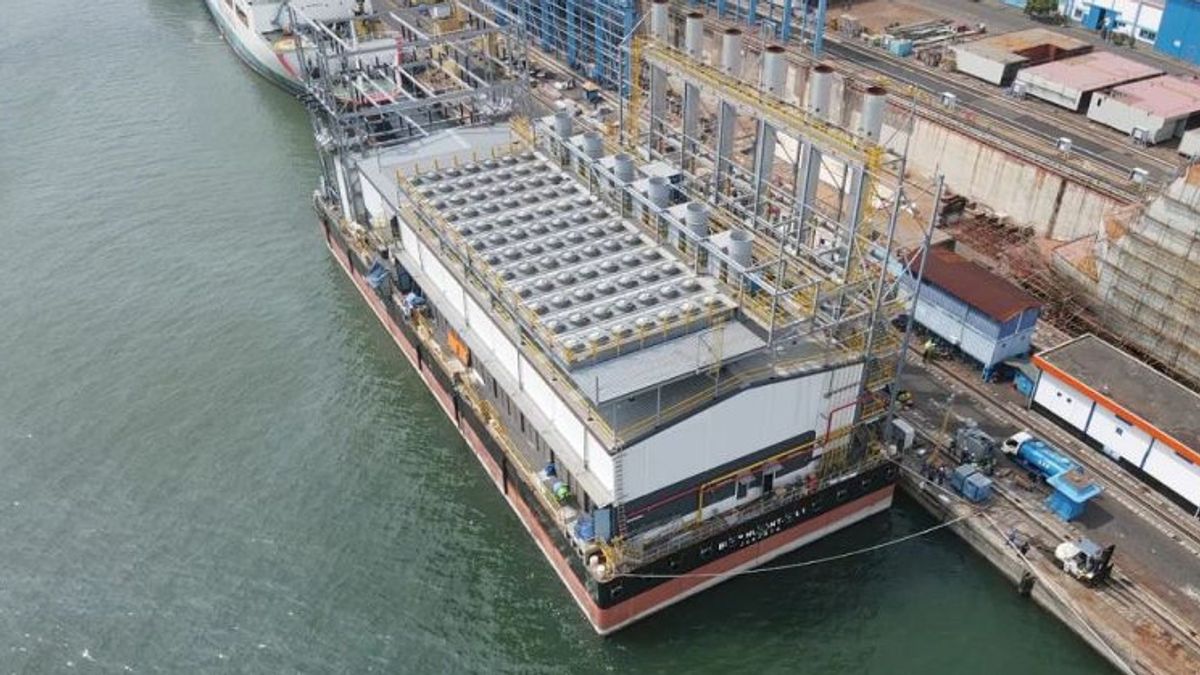JAKARTA - PT PLN Persero's subsidiaries, PT Indonesia Power and PT PAL will add 2 power plants on board or Barge Mounted Power Plant (BMPP) Nusantara 2 and BMPP Nusantara 3 with an investment value of Rp. 1.6 trillion.
Through his official statement, PLN President Director Darmawan Prasodjo said the development of two Mobile Power Plants (MPP) with a total capacity of 90 Mega Watts (MW) was for the Kolaka and Sambelia areas.
"BMPP Nusantara 2 with a capacity of 60 MW is planned to supply the Kolaka electricity system, Southeast Sulawesi via a 150 kilo volt (kV) network. Meanwhile, BMPP Nusantara 3 will supply 30 MW of power to the Sambelia system, East Lombok," Darmawan explained, quoted on Monday, January 31.
The two MPPs will also function as suppliers of electrical power for eastern Indonesia. Therefore, these two units are expected to be more agile in terms of moving speed, so that they can be a mainstay when the main flow of electricity occurs when a disaster goes out.
"We hope that BMPP 2 and 3 will be much more agile. The movement can be faster so that it can become a mobile reserve margin to be used, especially if there is a disaster," said Darmawan.
On the other hand, the President Director of PT PAL, Kaharuddin Djenod PAL will make BMPP Nusantara units two and three much better in terms of technology.
"This BMPP too, we have talked to Mr. Darmawan, what if the design can be slimmer. The hull is slimmer, so that the brunt of the waves in Indonesia which is quite high can be faced by BMPP Nusantara," said Kaharuddin.
In addition to the development of BMPP, PLN and PAL also collaborate to be able to take advantage of the potential of ocean currents and waves in Indonesia to become a new renewable energy power plant. This move is in line with the “Green” RUPTL.
Darmawan explained that Indonesia is an archipelagic country with an ocean area that has great potential. For example, ocean currents and existing waves can be used as a source of electricity.
"In every strait in Indonesia there are ocean currents and waves. This can be a new strength for Indonesia," said Darmawan.
PLN has also discussed this with PT PAL. Mapping the potential for ocean currents and waves that can be used as electric currents is carried out together.
"We also relate it to where the demand is. We are also discussing with PT PAL about what kind of technology declaration," said Darmawan.
This is also a translation step of the current Green RUPTL. Next year there will be a de-dieselization program in 2,100 points in Indonesia that can be replaced by energy based on ocean currents and waves.
"We will map it from the RUPTL, we will turn it into a program that we carry out. I will direct it into what programs. We build synergy between SOEs," said Darmawan.
The English, Chinese, Japanese, Arabic, and French versions are automatically generated by the AI. So there may still be inaccuracies in translating, please always see Indonesian as our main language. (system supported by DigitalSiber.id)













